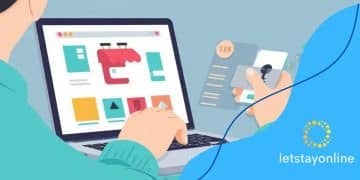Strategies for reducing student loan debt in 2025

Strategies for reducing student loan debt in 2025 include income-driven repayment plans, loan forgiveness programs, budgeting techniques, and refinancing options to help manage payments and decrease overall financial burdens.
Strategies for reducing student loan debt in 2025 are becoming increasingly important as graduates face rising costs. Have you considered how these strategies can impact your future? Let’s delve into effective methods that could lighten your load.
Understanding student loan debt in 2025
Understanding student loan debt in 2025 is essential for every borrower. As college costs continue to rise, many students find themselves burdened by significant amounts of debt. This increased financial responsibility can feel overwhelming, but knowing more about the situation helps in managing it.
One of the critical components is recognizing the various types of loans available to students. Federal loans, like Direct Subsidized and Direct Unsubsidized loans, provide different benefits, including subsidized interest while in school. Understanding these differences is crucial in planning your repayment strategy.
The growing impact of interest rates
Interest rates significantly influence the overall cost of borrowing. In 2025, students may encounter higher rates on both federal and private loans. With rising interest rates, it’s vital to start repayments as soon as feasible to minimize long-term costs. Lowering the principal balance quickly can save thousands over time.
Key points to consider:
- Loan type impacts repayment strategies.
- Understand your interest rates and how they affect total debt.
- Starting repayments earlier can reduce long-term costs.
- Research loan forgiveness opportunities that may apply.
Besides knowing about types of loans and interest rates, it’s also important to stay updated on potential legislative changes. Policies surrounding student loans can shift, affecting borrowers’ repayment options and forgiveness programs. Following news on student loans helps borrowers make informed decisions.
By gaining a solid understanding of student loan debt in 2025, students can better navigate their financial futures. Awareness is the first step towards responsible borrowing and successful repayment.
Income-driven repayment plans and options

Income-driven repayment plans offer a path for borrowers to manage their student loans based on their income level. These plans adjust monthly payments according to how much you earn, which can significantly ease financial pressure. If you’re struggling to make standard payments, understand these options can help you.
There are several types of income-driven plans available. The most common include Income-Based Repayment (IBR), Pay As You Earn (PAYE), and Revised Pay As You Earn (REPAYE). Each plan has unique guidelines and benefits, making it essential to choose the right one for your situation.
Benefits of income-driven repayment plans
These repayment options come with numerous advantages that can help ease your financial burden. First, monthly payments are capped at a percentage of your discretionary income. This means that as your income changes, so do your payments. Additionally, after a certain period of consistent payments, you may qualify for forgiveness on any remaining balance.
Key features of income-driven repayment plans:
- Payments are adjusted based on your income.
- Potential for loan forgiveness after 20 or 25 years.
- Lower monthly payments compared to standard repayment plans.
- Allows for more financial flexibility in challenging times.
Applying for these plans typically requires filling out a specific application form. You can do this online or through your loan servicer. Make sure to provide accurate income information to ensure your payment amount is correct. Depending on your income level, you may even see significant reductions in your monthly bills.
Staying informed on how these plans work not only helps you in the short term but also sets you up for long-term financial success. Review your options and see which income-driven plan can best meet your needs.
Loan forgiveness programs available
Loan forgiveness programs available to borrowers can significantly ease the burden of student debt. These programs are designed to provide relief to those working in certain fields or meeting specific criteria. Understanding how these programs work is crucial for anyone looking to reduce their loan balances.
One well-known option is the Public Service Loan Forgiveness (PSLF) program. This program forgives the remaining balance on your direct loans after you have made 120 qualifying monthly payments while working full-time for a qualifying employer. Qualifying employers generally include government organizations and nonprofit entities.
Types of loan forgiveness programs
In addition to PSLF, several other forgiveness programs may help borrowers. These include:
- Teacher Loan Forgiveness: This program is aimed at teachers who work in low-income schools for five consecutive years.
- Nursing Loan Forgiveness: Available for registered nurses who work in underserved areas.
- Income-Driven Repayment Forgiveness: After 20 or 25 years of qualifying payments in an income-driven repayment plan, any remaining balance may be forgiven.
Each program has specific eligibility requirements, so it’s essential to review these details closely to ensure you qualify. If you’re unsure, it can be beneficial to talk to your loan servicer for guidance. Being proactive about your loans can unlock these forgiveness opportunities and lead to financial freedom.
Many borrowers may also benefit from state-specific forgiveness programs, which may cater to professionals in various fields, including healthcare, education, and public service. These programs can provide additional options beyond federal forgiveness initiatives.
Tips for budgeting and financial planning

Tips for budgeting and financial planning are essential for managing student loan debt effectively. Having a solid financial plan can help you stay on track with your monthly payments and avoid additional fees. Understanding effective budgeting can empower you to take control of your finances.
One effective method is the 50/30/20 rule. This rule suggests allocating 50% of your income to needs, 30% to wants, and 20% to savings or debt repayment. Following this guideline can simplify your budgeting process and help prioritize your loan payments.
Creating a realistic budget
To create a budget, list all your monthly income sources and track your expenses. Keep a record of everything you spend for at least a month to identify patterns in your spending. Categorizing your expenses can help you see where you can cut back. Consider using budgeting apps or spreadsheets to make tracking easier.
Key budgeting strategies:
- Set clear financial goals: Define what you want to achieve, such as paying off a specific loan amount.
- Review regularly: Check your budget and adjust it as your income or expenses change.
- Limit unnecessary expenses: Identify areas where you can cut back, like dining out or subscription services.
- Create an emergency fund: Aim to save at least three to six months’ worth of expenses to cover unexpected costs.
In addition to budgeting, financial planning involves setting long-term goals, such as saving for retirement or a home purchase. Understanding your loan repayment terms and options can also help in strategizing your financial plans. Allocate extra funds towards your student loans when possible to reduce interest over time and lessen your overall debt burden.
By taking these steps, you can develop a budgeting strategy that not only helps with your student loans but also prepares you for future financial challenges. Staying focused on your goals will ultimately lead to greater financial freedom.
Exploring refinancing and consolidation strategies
Exploring refinancing and consolidation strategies can provide a clearer path to managing student loan debt. These options may help borrowers simplify payments and potentially lower monthly costs. Understanding how refinancing and consolidation work is crucial for maximizing their benefits.
Refinancing involves taking out a new loan to pay off one or more existing loans. This new loan may have a lower interest rate or a different repayment term, allowing you to save money over time. It’s important to note that refinancing federal loans can cause you to lose certain benefits, such as loan forgiveness programs.
Benefits of refinancing student loans
Refinancing offers several advantages that can be appealing to borrowers. Here are some key points to consider:
- Lower interest rates: If you qualify for a lower rate, your monthly payments may decrease.
- Flexible repayment terms: You can choose a term that fits your budget and financial situation.
- Single monthly payment: Instead of juggling multiple loans, you can have just one, making it easier to manage.
On the other hand, consolidation involves combining multiple federal loans into a single Direct Consolidation Loan. This option does not require a credit check and offers fixed interest rates based on the average of the loans being consolidated.
Key features of consolidation:
- Maintain federal benefits: You retain certain borrower benefits, such as income-driven repayment plans.
- No credit impact: It’s a good choice for those worried about their credit score.
- Extended repayment period: This can lower monthly payments but may increase total interest paid over time.
When considering whether to refinance or consolidate, it’s essential to assess your overall financial goals. Analyze your current interest rates, monthly payments, and loan types to determine what option might work best for your situation. Speak with financial professionals if you need guidance.
At the end of the day, both refinancing and consolidation can provide pathways to a more manageable repayment plan. Taking the time to explore these strategies is an integral step toward effectively handling your student loan debt.
FAQ – Frequently Asked Questions about Student Loan Debt Management
What are income-driven repayment plans?
Income-driven repayment plans adjust your monthly payments based on your income, making it easier to manage student loan debt.
How can I qualify for loan forgiveness programs?
To qualify for loan forgiveness programs, you typically need to work in certain public service jobs or meet specific repayment conditions.
What are some effective budgeting tips for managing student loans?
Setting clear financial goals, tracking all expenses, and following the 50/30/20 rule can help manage expenses and student loan payments effectively.
Is refinancing my student loans a good option?
Refinancing can be beneficial if you qualify for a lower interest rate, but it may cause you to lose some federal loan benefits.






